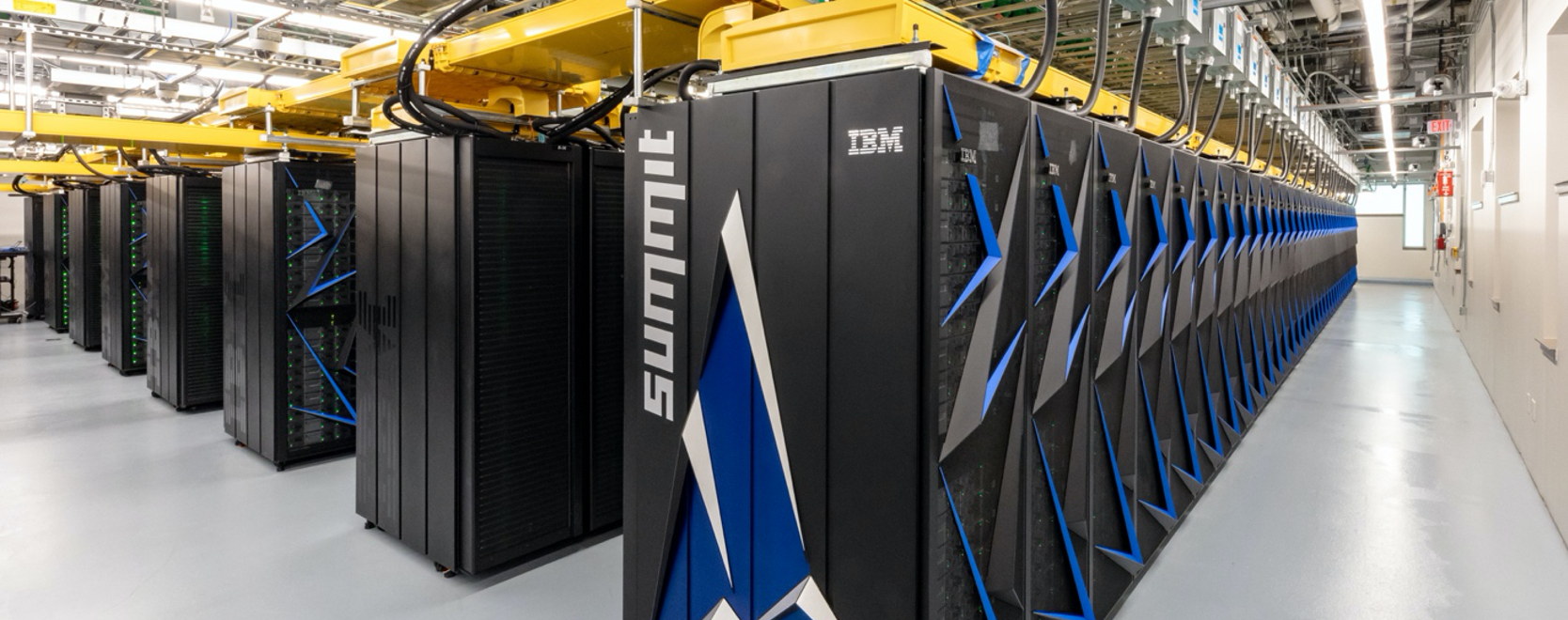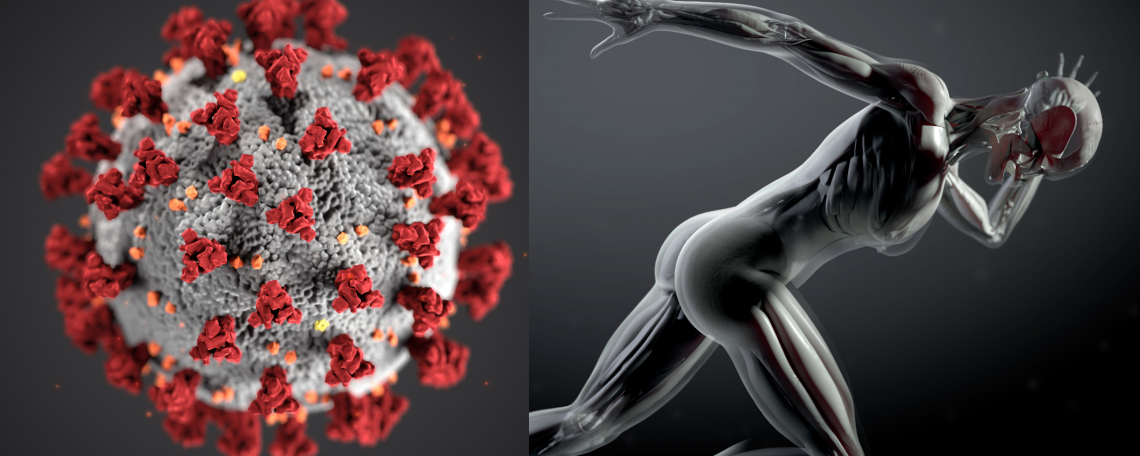
Photo by Oak Ridge Leadership Computing Facility at Oak Ridge National Laboratory. Summit is a next-generation IBM/NVIDIA supercomputer with an aggregate peak compute speed of over 200 PFLOP/S.
The full consortium of more than a hundred researchers is comprised of five national laboratories (Argonne, Brookhaven, Los Alamos, Oak Ridge National Laboratory, Lawrence Livermore National Laboratory), nine universities (University of Chicago, University of Illinois, University of Virginia, Rutgers University, Stony Brook University, George Mason University, University of Texas, University of California San Diego, UCL), a private research centre (JC Venter Institute), and a public academy (Leibniz Rechenzentrum at the Bavarian Academy of Sciences and Humanities). This consortium will benefit from the resources, and knowledge base of the CompBioMed2 Centre of Excellence.
Research is underway involving an exceptionally powerful array of supercomputers at Argonne Leadership Computing Facility, Brookhaven, the Texas Advanced Computing Center, Oak Ridge, the San Diego Supercomputing Center, and the Leibniz-Rechenzentrum (LRZ). This includes the German supercomputer SuperMUC-NG at LRZ, the American supercomputer Summit at Oak Ridge National Laboratory (numbers 9 and 1 among the top 500 supercomputers respectively), and the British supercomputer Scafell Pike at The Hartree Centre. The Advanced Photon Source and the UK Diamond Light Source have pledged experimental validation of protein-ligand interactions.
In addition to computational drug discovery, the overall effort of the consortium currently involves a further five main lines of attack. These lines of attack are the identification of new antiviral drugs (Drug Toxicity); accelerating vaccine development (Epitope Analysis); studying the spread of the virus within communities (Computational Epidemiology); the evolution of the virus (Virus Evolutionary Analysis); and characterising interactions between hosts and the virus (Host Response Analysis). These six areas of research are described in detail on the pages below:
Computational Drug Discovery
Epitope Analysis
Drug Toxicity
Computational Epidemiology
Virus Evolutionary Analysis
Host Response Analysis
1. Structures and Protein Production
Advanced Photon Source: Argonne
Advanced Light Source: Berkeley
SLAC/Stanford Synchrotron Radiation Lightsource: Stanford
National Synchrotron Light Source-II: Brookhaven
2. Wet-labs that are performing assays against our hits/targets
University College London
University of Chicago
Sandia / Los Alamos/ Livermore National Labs
Howard Ricketts Laboratory
Frederick National Laboratory for Cancer Research
Emerald Cloud Labs
Strateos
3. Synthetic Medicinal Chemists working to make new molecules associated with particularly encouraging candidate inhibitors
University of Chicago
Much of the initial work identifying targets and complexes has been and continues to be done with the centres listed in sections 1 and 2. Medicinal chemistry laboratories have opened up at the University of Chicago in the past three weeks to support this effort.
CompBioMed-Coronavirus Pages:
CompBioMed and Coronavirus
The Consortium on Coronavirus
CompBioMed Partner Activity
Call for Contributions
Coronavirus Research Resources
Coronavirus Blog
Areas of Research:
Computational Drug Discovery
Epitope Analysis
Drug Toxicity
Computational Epidemiology
Virus Evolutionary Analysis
Host Response Analysis

